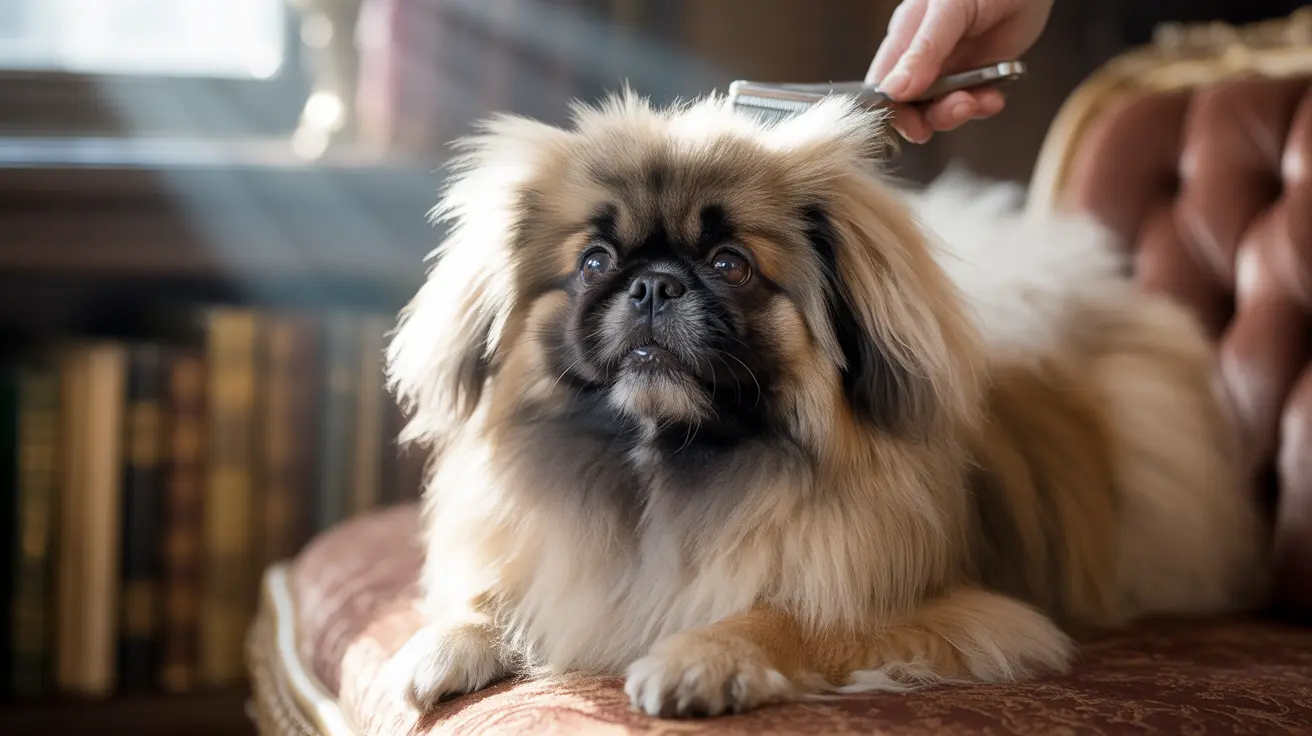Pekingese dogs, with their distinctive lion-like mane and regal bearing, stand as living symbols of ancient Chinese imperial heritage. These small yet dignified companions have captivated dog lovers for centuries, from their origins in the palaces of Beijing to modern-day homes worldwide.
In this comprehensive guide, we'll explore everything you need to know about these fascinating dogs, from their rich history to their unique care requirements and characteristic personality traits.
The Royal History of Pekingese Dogs
Originally bred as companions to Chinese emperors, Pekingese dogs hold a prestigious place in canine history. These sacred pets were so valued that stealing one from the imperial palace was once punishable by death. Their introduction to the Western world occurred in 1860, when British troops brought several of these imperial dogs back from the Summer Palace during the Second Opium War.
Physical Characteristics and Appearance
Despite their small stature, Pekingese dogs possess a distinctively robust and well-built frame. They typically weigh between 7-14 pounds and stand 6-9 inches tall at the shoulder. Their most striking feature is their luxurious double coat, which forms the characteristic "lion's mane" around their neck and shoulders.
The breed's flat face (brachycephalic), large eyes, and distinctive wrinkled muzzle create their endearing expression. Their coat comes in various colors, including gold, red, black, and cream, often featuring a black mask and ear tips.
Temperament and Personality Traits
Pekingese dogs exhibit a unique combination of dignity and independence, reflecting their royal heritage. While deeply loyal to their chosen family members, they maintain a somewhat aloof and aristocratic demeanor. These intelligent dogs can be stubborn but respond well to patient, consistent training methods.
Despite their small size, they make excellent watchdogs, alerting their owners to any unusual activity with their surprisingly deep bark. They tend to form strong bonds with one particular family member while remaining cordial with others.
Care and Maintenance Requirements
Grooming Needs
The luxurious coat of Pekingese dogs requires dedicated grooming attention. Daily brushing helps prevent matting and manages shedding, while regular cleaning of facial folds prevents skin infections. Professional grooming every 6-8 weeks helps maintain optimal coat condition.
Exercise and Activity Levels
While not highly energetic, Pekingese dogs benefit from regular, moderate exercise. Short daily walks and indoor play sessions suffice, making them excellent apartment companions. However, their brachycephalic nature means they should avoid strenuous activity, especially in hot or humid weather.
Health Considerations
As brachycephalic breeds, Pekingese dogs require special attention to their respiratory health. They're also prone to eye problems, spinal issues, and heart conditions. Regular veterinary check-ups and maintaining a healthy weight are crucial for their well-being.
Training and Socialization
Early socialization is essential for developing well-adjusted Pekingese dogs. Their independent nature requires patient, positive reinforcement-based training methods. Consistency and gentle guidance help prevent the development of small dog syndrome while respecting their dignified character.
Frequently Asked Questions
How often should I brush my Pekingese dog to prevent matting and tangles in their coat?
Brush your Pekingese at least 3-4 times per week, though daily brushing is ideal. Focus on the longer fur around the neck, chest, and behind the ears where matting commonly occurs. Use a pin brush followed by a metal comb to ensure thorough grooming.
What kind of exercise is best for Pekingese dogs, and how often should they be exercised?
Short, 15-20 minute walks twice daily are ideal for Pekingese dogs. Indoor play sessions and gentle activities are also beneficial. Avoid exercising during hot weather or humid conditions due to their breathing limitations.
Why are Pekingese dogs prone to respiratory issues, and how can I manage these problems?
Their flat faces and shortened airways (brachycephalic syndrome) make them prone to breathing difficulties. Manage this by avoiding overexertion, maintaining a healthy weight, and keeping them cool. Watch for excessive panting or breathing difficulties and consult your vet if concerned.
How can I prevent eye problems in my Pekingese dog, given their large and prominent eyes?
Clean around the eyes daily with a damp cloth to prevent tear staining. Keep facial fur trimmed to avoid eye irritation. Regular vet check-ups can catch potential issues early. Protect their eyes from injury by avoiding rough play and keeping irritants away.
What is the best way to socialize a Pekingese puppy to ensure they are comfortable with new people and pets?
Start socialization early, between 3-16 weeks of age. Expose them gradually to various people, environments, and other pets in controlled, positive situations. Use treats and praise to create positive associations. Never force interactions; let them approach new experiences at their own pace.
Conclusion
Pekingese dogs offer a unique blend of royal dignity and devoted companionship. While they require dedicated grooming and thoughtful health management, their loyal and distinctive personalities make them wonderful pets for the right owners. Understanding and appreciating their special needs and characteristics is key to providing these noble companions with the care they deserve.






